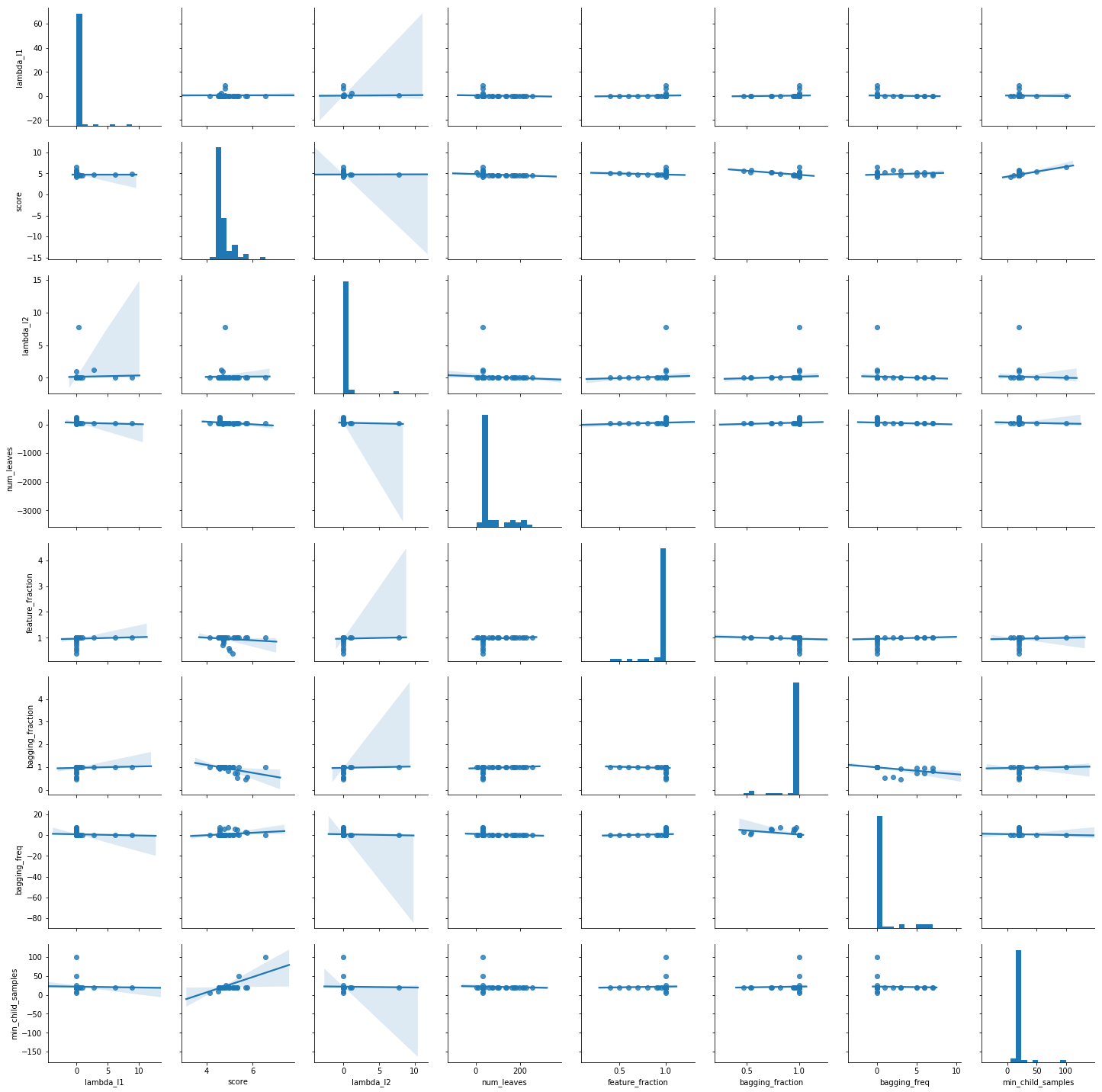LightGBMをOptunaでパラメータチューニングする
TL;DR
LightGBMのパラメータをOptunaのLightGBM Tunerでチューニングします。
OptunaのLightGBM TunerはOptunaに組み込まれているLightGBM用のパラメータチューナーです。
ベンチマーク用データとしてはボストン住宅価格データセットを使用します。
XGBoostに対するOptunaはXGBoostをOptunaでパラメータチューニングするをご覧下さい。
データ準備
from sklearn import datasets, model_selection
features, labels = datasets.load_boston(return_X_y =True)
train_features, test_features, train_labels, test_labels = model_selection.train_test_split(features, labels, test_size=0.2)
train_features, valid_features, train_labels, valid_labels = model_selection.train_test_split(train_features, train_labels, test_size=0.1)
print(train_features.shape)
print(train_labels.shape)
print(valid_features.shape)
print(valid_labels.shape)
print(test_features.shape)
print(test_labels.shape)
import lightgbm as lgb
trains = lgb.Dataset(train_features, train_labels)
valids = lgb.Dataset(valid_features, valid_labels)
tests = lgb.Dataset(test_features, test_labels)
ハイパーパラメータ最適化
import optuna.integration.lightgbm as lgb
params = {
'objective': 'mean_squared_error',
'metric': 'rmse'
}
best_params, history = {}, []
model = lgb.train(params, trains, valid_sets=valids,
verbose_eval=False,
num_boost_round=100,
early_stopping_rounds=5,
best_params=best_params,
tuning_history=history)
best_params
{'lambda_l1': 0.5180093752159527,
'lambda_l2': 0.018791253111455634,
'num_leaves': 31,
'feature_fraction': 1.0,
'bagging_fraction': 1.0,
'bagging_freq': 0,
'min_child_samples': 5}
param_defaults = {
'lambda_l1': 0.0,
'lambda_l2': 0.0,
'num_leaves': 31,
'feature_fraction': 1.0,
'bagging_fraction': 1.0,
'bagging_freq': 0,
'min_child_samples': 20
}
%matplotlib inline
import pandas as pd
import seaborn as sns
study_vals = []
for h in history:
vals = {}
for k, v in best_params.items():
if k in h['value']:
dic = eval(h['value'])
col = k
val = dic[k]
else:
col = k
val = param_defaults[k]
vals[col] = val
vals['score'] = h['val_score']
study_vals.append(vals)
study_df = pd.DataFrame(study_vals)
sns.pairplot(study_df, kind='reg')
見つけたパラメータでモデル作成
import lightgbm as lgb_original
from sklearn.metrics import r2_score
model = lgb_original.train(params, trains, num_boost_round=100)
predicts = model.predict(test_features)
base_r2 = r2_score(test_labels, predicts)
model = lgb_original.train(best_params, trains, num_boost_round=100)
predicts = model.predict(test_features)
best_r2 = r2_score(test_labels, predicts)
print(f'Base params: {params}')
print(f'Best params: {merged_params}')
print(f'Base: {base_r2}, Best: {best_r2}, Diff: {best_r2 - base_r2}')
Base params: {'objective': 'mean_squared_error', 'metric': 'rmse'}
Best params: {'objective': 'mean_squared_error', 'metric': 'rmse', 'lambda_l1': 0.5180093752159527, 'lambda_l2': 0.018791253111455634, 'num_leaves': 31, 'feature_fraction': 1.0, 'bagging_fraction': 1.0, 'bagging_freq': 0, 'min_child_samples': 5}
Base: 0.8711808181814997, Best: 0.9004158293791359, Diff: 0.029235011197636163
まとめ
Optunaによりハイパーパラメータを探索することで以下の様に改善する事ができました。
- デフォルト: 0.87
- 最適化後: 0.90
- 改善値: 0.03
LightGBM専用のハイパーパラメータチューナーがOptunaに組み込まれたことにより、普通にLightGBMとしてトレーニングするだけでパラメータの最適化が可能になりました。
モデル探索の最初の一手としては最適だと思われます。
